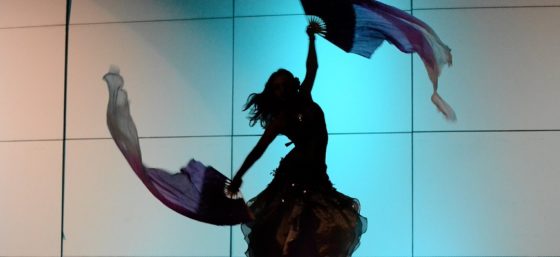
Last week, I saw a thread in an online photography group that started with a simple question: “What problems do you face as a photographer?” After reading hundreds of the responses, I wanted to respond to some of their problems as both a lawyer and an entrepreneur:
Competition – Other Photographers Offering Half the Price
My first thought when I read this was, “There’s a good chance it’s also half the quality.” You never want to be in a race to the lowest price. Instead of worrying about price, focus on what makes you different from the competition.
If someone wants a cheap photographer to document their once in a lifetime event, like their wedding, that’s their choice. If I were facing a client who said, “I can get someone to photograph my wedding at half this price,” I hope my response would be something like, “This is your special day. You have to choose who you trust to capture these moments for you.”
Personally, I have no problem when a client self-selects out from working with me if they don’t want to pay my rate. It’s better that they decide that early and go with someone else.
This problem reminds me of a sign I saw in a tattoo parlor: “Good tattoos aren’t cheap. Cheap tattoos aren’t good.” The same is likely true for photographers.
Clients Don’t See What We’re Worth
Part of being an entrepreneur is educating prospective client about the value we bring. It’s not that skilled photographers cost so much, but they’re worth so much. Some of the ways you can do this is by having a high-quality portfolio and a stellar reputation.
Remember: You’re not just taking photos; you’re creating an experience – every interaction from the first “hello” to the final deliverable. Your ability to take and edit photos are important, but so are the way you carry yourself, how you communicate, and your creativity, work ethic, and confidence in your skills. All of those things add or detract from your value as an artist. You want to be in a position where people want to hire you, not just any photographer.
I had a similar situation when I hired the designer who created the logos for Scarlet MavenTM and Lights Camera LawsuitTM. I could have used a discount service like 99 Designs or Fiverr, but I didn’t want to entrust a stranger with this task. I wanted to work with Square Peg Creative and Dina Miller. I’d seen and loved the way she created. I was willing to pay extra for that experience, and the resulting logos that I love.
How to Tell People I’m a Proper Photographer
The best way to tell people that you’re a professional photographer is to act like one. Create a business entity, a website with a portfolio, and contract templates for your services. If you want people to take your seriously, you have to act like a professional.
Speaking of Contracts
Contracts are relationship management documents. Once a client signs the contract, they are bound by its terms. Whenever there’s a problem, you can refer back to the contract and the terms they already agreed to. This is where you can put information like,
- The deposit is non-refundable.
- The photographer chooses the best images to show client. The client will not get raw images.
- There’s no guarantee you’ll capture every image the client was hoping for.
- The client is not allowed to edit the final images. This includes adding filters or stickers or cropping the images.
There’s a video I recommend to almost every entrepreneur called F*ck You, Pay Me, that features a graphic designer and his lawyer talking about how they use contracts to make sure the client pays per the contract’s terms. The suggestions work for many types of professional creatives.
Clients with High Expectations and Low Budgets
While many people don’t like talking about money, it is a topic you want to discuss early in the vetting process by either giving the prospective client your price list or asking about their budget. Don’t be afraid to be frank with clients who have expectations that are way beyond what they can afford. Tell them what they can afford based on their budget, as well as what you could do if they are willing to pay more so they can make an educated decision about what they want.
Clients Who Try to Negotiate on Price
In the photographer-client relationship, they are hiring you. You get to decide what is and is not negotiable in your contract. If your rates are not negotiable, be clear about that the first time they ask.
In my practice, I hand pick who are my pro bono clients and who gets a discount. That’s my call, not the other way around.
Here’s a tip I saw from another photographer: Make your prices all-inclusive. Don’t list separate prices for shooting and editing, because it opens the door for clients to try to haggle on one or the other.
Companies that Want You to Work for Free or Magazines that Want to Use Images for Free
Oh, it’s so cute when people want you to work for “exposure.” You get to decide how you respond to those requests. Here are some of my favorites:
- Exposure is not a currency that my landlord accepts.
- I can’t pay my mortgage with exposure.
- People die of exposure.
Chasing Payments
Ideally, you want to create a photographer-client relationship where it’s easier to comply with the terms of the contract and pay on time, than not. Many photographers charge a non-refundable deposit to book a shoot or event and require the balance to be paid in by the day of the shoot or event. At the latest, I don’t recommend a photographer provide proofs unless they’ve been paid for the shoot.
You also want to have terms in your contract about cancelled appointments, late payments, and non-payments, so that you set yourself up to get paid what you’re owed in a timely manner.
Are You Free Next Week?
You can put the information about how far in advance a prospective client should expect to book you near your contact information or in your FAQs if you have them.
People Assuming You will Photoshop them Perfect
This problem reminds me of Christian Siriano on Project Runway when he said, “I’m not a miracle worker, lady. I can’t make you have an ass!”
In talking with your client, set some expectations about what Photoshop can and can’t do. Assume your client doesn’t know anything about photography, unless they are a professional photographer themselves. You can educate your clients by showing them before and after images so they can see the type of edits you’ll be doing for them.
It’s ok to have fun with it, if that’s your style, by saying things like, “If you’re 5’2”, I can’t make you 5’10”,” or “If you have a ‘dad bod,’ I can’t transform you into Thor.” On the softer, more realistic side, remind your client that it’s your job to capture them looking their best, not like someone else.
Bonus Tips from my Experience as Model: Posing
Several people said they had problems with posing models or giving direction. As a model, my response is, “Don’t be afraid to try.” You’re the one behind the camera. I can’t see how I look.
If you give a model a pose and it doesn’t create a good image, try something else. I won’t know if you didn’t get the shot you wanted. I’ll think you have lots of ideas.
It’s ok to think out loud and say things such as, “I like how this light is hitting your eyes, let’s try this.”
I’ve you are afraid you won’t remember the ideas you wanted to try from other images, bring notes to the shoot. It shows you’re prepared, and thinking about what types of images might be best for me.
Learning how to pose models and give direction is something you develop over time, with practice, and watching others. Unless you’re doing some extreme work, no one is going to die. And don’t forget – I can’t see how I look, so as far as I know, whatever you’re trying is brilliant.
Lights Camera LawsuitTM
There’s always a need for quality legal information for photographers. That’s why I created an online course called Lights Camera Lawsuit: The Legal Side of Professional Photography to address photographers’ most important questions. I want you to feel secure in your business, confident in the way you operate day-to-day, knowing that you’ve set yourself up to get paid what your worth without incident.
At $497, the course contains nearly six hours of legal information you can immediately apply to your business. That’s less than what I charge for two hours of legal work for clients!
Please subscribe for more information and to make sure you don’t miss out on any special offers or discounts.

